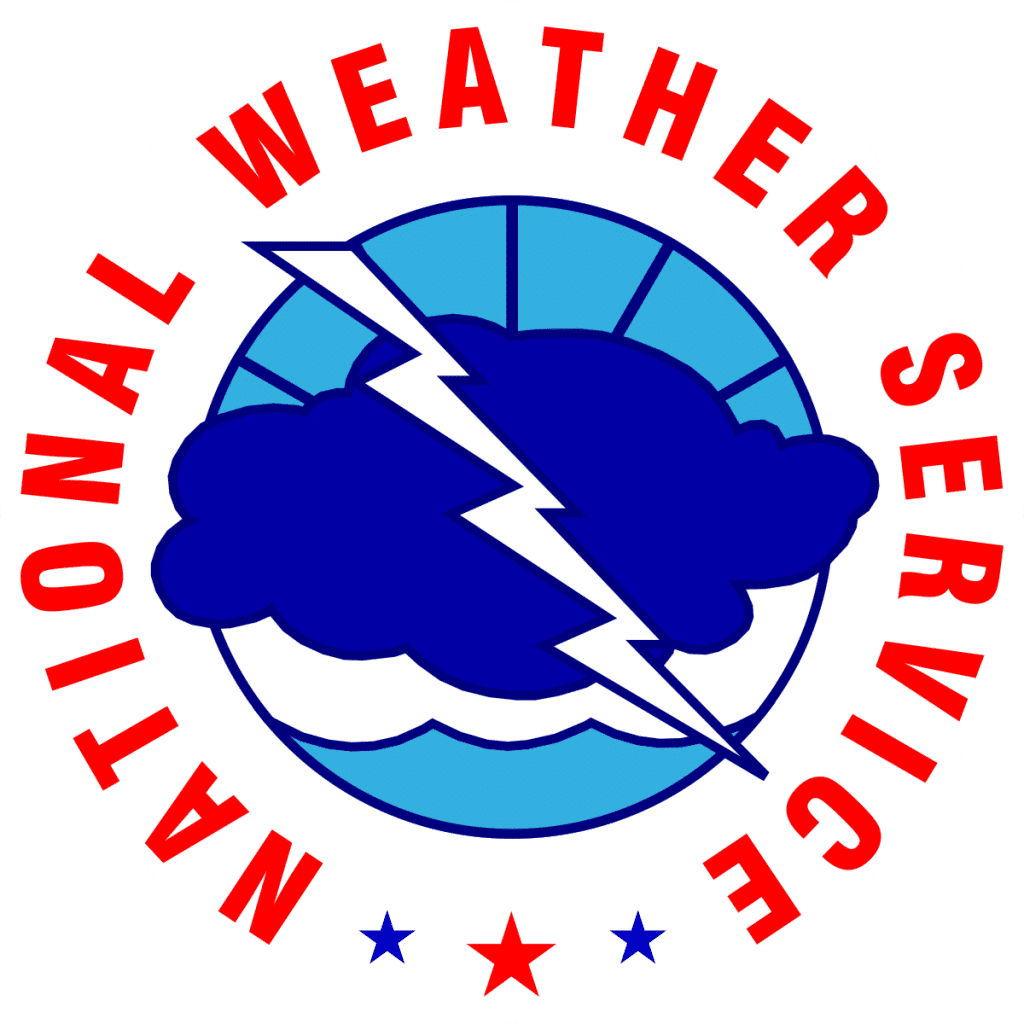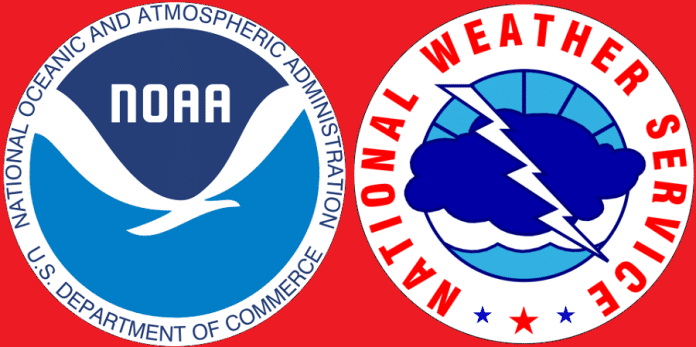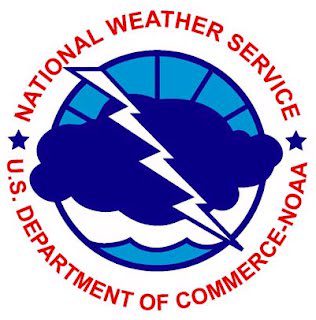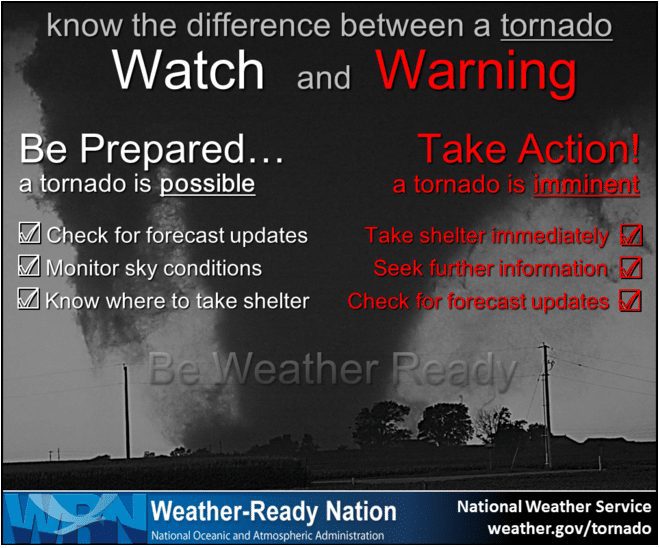Have you ever wondered about the distinction between NOAA and the National Weather Service? Well, let us enlighten you! In this article, we will provide a clear and concise explanation of the difference between these two significant entities in the world of meteorology. So, if you’re curious about their roles and responsibilities, buckle up and get ready to uncover the complexities behind NOAA and the National Weather Service. Get ready to broaden your knowledge about weather forecasting and monitoring with us!

This image is property of upload.wikimedia.org.
Review contents
NOAA
Overview of NOAA
The National Oceanic and Atmospheric Administration (NOAA) is an agency within the United States Department of Commerce. As the leading federal agency for understanding and predicting atmospheric, oceanic, and climate conditions, NOAA plays a crucial role in protecting our lives, property, and natural resources. With a focus on scientific research and data collection, NOAA contributes to the overall understanding of our environment and provides a wide range of services to the public.
Mandate of NOAA
NOAA’s mandate is to provide accurate and timely environmental information to support scientific research, resource management, and decision-making processes. This includes everything from monitoring weather patterns to studying marine ecosystems and climate change. NOAA has the responsibility of promoting sustainable development, protecting the nation’s natural resources, and mitigating risks associated with environmental hazards.
Functions and Responsibilities of NOAA
NOAA fulfills its mandate through a variety of functions and responsibilities. One of its primary functions is to gather and analyze data related to weather, climate, oceans, and coasts. By operating a network of satellites, radars, and ground-based stations, NOAA collects vast amounts of data that are crucial for both short-term weather forecasting and long-term climate studies.
In addition to data collection, NOAA also conducts extensive research to enhance our understanding of the Earth’s atmosphere and oceans. This research enables scientists to improve weather prediction models, monitor changes in oceanic ecosystems, and analyze the impact of climate change on various regions. Moreover, NOAA plays a vital role in developing cutting-edge technologies and tools used in weather forecasting, including advanced radar systems and computer models.
Furthermore, NOAA is responsible for issuing weather warnings, alerts, and advisories to the public, ensuring that people are informed and prepared for potentially dangerous weather events. This includes severe storms, hurricanes, tornadoes, and other hazardous conditions.
National Weather Service (NWS)
Overview of NWS
The National Weather Service (NWS) is a subdivision of NOAA and is tasked specifically with the primary responsibility of providing weather forecasts, warnings, and other weather-related services to the public. As the nation’s official source of weather information, the NWS plays a crucial role in safeguarding lives and property, as well as supporting industries that rely on weather forecasts.
Mandate of NWS
The NWS’s mandate is focused on the provision of accurate and timely weather information to protect lives, enhance economic productivity, and promote the overall well-being of society. Their primary goal is to deliver forecasts that enable individuals, businesses, and governments to make informed decisions based on weather conditions.
Functions and Responsibilities of NWS
The NWS fulfills its mandate through several functions and responsibilities. One of its primary functions is to gather and analyze weather data from various sources, including NOAA’s vast network of observing systems. This enables meteorologists at NWS to generate accurate and up-to-date weather forecasts, warnings, and advisories for locations across the United States.
The NWS operates a network of local weather forecast offices throughout the country, staffed with highly trained meteorologists who monitor weather conditions and issue alerts as necessary. These offices are responsible for issuing forecasts tailored to specific regions, providing information on expected temperatures, precipitation, and severe weather events like thunderstorms, floods, and winter storms.
Furthermore, the NWS collaborates with emergency management agencies, the media, and other stakeholders to ensure that weather information reaches the public effectively. This includes disseminating warnings and advisories through various communication channels, such as radio, television, websites, and mobile apps.
Differences in Mandate and Focus
NOAA’s Broad Mandate
NOAA’s mandate is significantly broader than that of the NWS. While NWS focuses solely on weather-related services, NOAA’s responsibilities encompass a much wider range of environmental factors. This includes studying and monitoring oceanic conditions, climate patterns, and the Earth’s ecosystems. NOAA’s mandate extends beyond weather forecasting to include natural resource management, coastal resilience, and environmental protection.
NWS’s Specific Mandate
In contrast, the NWS has a much narrower mandate that is primarily focused on weather forecasting and related services. The NWS’s primary objective is to provide accurate and timely weather information to the public, enabling individuals, businesses, and governments to make informed decisions and safeguard lives and property. While the NWS collaborates closely with NOAA and utilizes its vast network of observing systems, its primary focus remains on delivering weather forecasts and warnings.
Scope of Operations
NOAA’s Diverse Scope
Due to its broader mandate, NOAA’s operations are diverse and far-reaching. NOAA’s activities span across oceans, coasts, fisheries, climate, and weather. From studying marine life and ecosystems to monitoring changes in global climate patterns, NOAA’s work encompasses a wide range of scientific disciplines. This comprehensive approach allows NOAA to understand the interconnectedness of Earth’s systems and provide a holistic view of environmental conditions.
NWS’s Forecasting and Warning Focus
On the other hand, the NWS has a more focused scope of operations centered around weather forecasting and warnings. Its primary function is to analyze weather data and generate accurate forecasts for specific regions. The NWS also issues warnings and advisories to alert the public of potentially hazardous weather conditions, such as severe storms, hurricanes, and tornadoes. While the NWS’s scope is narrower compared to NOAA, its specialized focus allows it to excel in providing vital weather information to the public.
This image is property of weatherboy.com.
Research and Development
NOAA’s Extensive Research Role
As a leading scientific agency, NOAA places a strong emphasis on research and development. NOAA conducts extensive research in various fields, including climate science, oceanography, atmospheric physics, and ecosystem dynamics. This research enables NOAA scientists to better understand our planet’s complex environmental systems, improve forecasting capabilities, and address critical issues like climate change and natural resource management. NOAA’s research and development efforts contribute to the advancement of scientific knowledge and support evidence-based decision-making.
Limited Research Focus of NWS
While the NWS relies on research conducted by NOAA and other scientific institutions, its primary focus is not on conducting extensive research. Instead, the NWS centers its efforts on applying existing scientific knowledge and models to deliver accurate and timely weather forecasts. By utilizing the research conducted by NOAA and other scientific partners, the NWS can translate scientific advances into practical and actionable weather information for the public.
Data Collection and Analysis
NOAA as a Data Provider
NOAA’s extensive network of observing systems, including satellites, radar, and ground-based stations, allows for the collection of vast amounts of environmental data. NOAA serves as a primary data provider, supplying crucial information on weather conditions, climate patterns, oceanic measurements, and more. This data forms the foundation for both NOAA’s own research and the work of other organizations, including the NWS.
NWS’s Utilization of NOAA Data
The NWS heavily relies on the data collected by NOAA to generate its weather forecasts and warnings. By utilizing NOAA’s observing systems and data analysis capabilities, the NWS can provide accurate and localized forecasts for specific regions. The collaboration between NOAA and the NWS ensures that the weather information disseminated to the public is based on the most reliable and up-to-date data available.
This image is property of www.census.gov.
Forecasting Capabilities
Comprehensive Forecasting Role of NWS
As the primary weather forecasting authority, the NWS has comprehensive forecasting capabilities. Its highly trained meteorologists utilize advanced computer models and data analysis techniques to generate accurate and localized forecasts. The NWS provides forecasts for various time frames, from the short-term (daily and hourly) to the long-term (seasonal and climate outlooks). These forecasts help individuals, businesses, and governments make informed decisions regarding outdoor activities, transportation, agriculture, and more.
NOAA’s Supporting Role in Forecasting
While the NWS takes the lead in weather forecasting, NOAA plays a crucial supporting role in enhancing the accuracy and reliability of forecasts. NOAA’s research and development efforts contribute to the continuous improvement of forecasting models and methodologies. By combining the data and research from NOAA with the forecasting capabilities of the NWS, the public can benefit from reliable and timely weather information.
Weather Prediction Centers
NWS’s Weather Prediction Centers
The NWS operates several Weather Prediction Centers (WPC), which serve as focal points for weather forecasting and analysis. The WPCs specialize in providing forecasts and guidance for specific weather phenomena, such as heavy rain, hurricanes, and winter weather. These specialized centers utilize state-of-the-art models and expertise to generate accurate predictions and inform the public and other stakeholders about potential weather hazards.
NOAA’s Collaboration with NWS Centers
NOAA works collaboratively with the NWS’s Weather Prediction Centers by providing support in terms of research, data analysis, and technological advancements. NOAA’s extensive research contributes to the development of more accurate forecasting models and the identification of emerging weather patterns. This collaboration ensures that the forecast information disseminated by the NWS’s Weather Prediction Centers is scientifically robust and reliable.
This image is property of sites.google.com.
National Centers for Environmental Information
NOAA’s National Centers for Environmental Information
NOAA operates the National Centers for Environmental Information (NCEI), which serve as a central repository for environmental data, information, and expertise. The NCEI integrates vast amounts of data collected by NOAA, including weather observations, climate records, oceanic measurements, and more. By consolidating and standardizing this data, the NCEI provides access to valuable climate and environmental information for researchers, policymakers, and the public.
Integration of NWS Data in the Centers
The NWS’s weather data, including historical and real-time observations, become part of the comprehensive collection managed by the NCEI. By integrating NWS data into the NCEI, NOAA ensures that it is readily available for research, climate analysis, and long-term climate monitoring. This integration allows for a more holistic understanding of environmental conditions, which is instrumental in addressing climate change, assessing historical weather patterns, and providing critical baseline data for future studies.
Services Provided to the Public
NWS’s Public Safety Warnings
The NWS provides essential public safety warnings, alerts, and advisories to protect lives and property during severe weather events. Through its network of local weather forecast offices, the NWS issues alerts to notify the public of approaching storms, dangerous conditions, and other weather-related hazards. These warnings are critical for individuals, emergency management agencies, and other stakeholders to take appropriate actions to ensure their safety and minimize the impact of severe weather events.
NOAA’s Broader Public Services
In addition to the weather-related services provided by the NWS, NOAA offers a broader range of public services focused on environmental stewardship, resource management, and data accessibility. These services include coastal management programs, fisheries management, environmental assessments, climate education and outreach, and more. NOAA’s commitment to public service ensures that individuals, communities, and industries have access to the information and resources necessary to make informed decisions regarding the environment and sustainability.
In conclusion, while NOAA and the National Weather Service (NWS) are closely interconnected, they have distinct roles and responsibilities. NOAA’s mandate encompasses a broader scope, including weather, climate, oceans, and ecosystems, with a focus on research, data collection, and environmental stewardship. On the other hand, the NWS specializes in weather forecasting and related services, providing accurate and timely information to protect lives, enhance productivity, and promote the overall well-being of society. Through their collaboration, NOAA and the NWS ensure the delivery of reliable weather forecasts, public safety warnings, and comprehensive environmental information to support research, decision-making, and the welfare of the public.
This image is property of pbs.twimg.com.







































